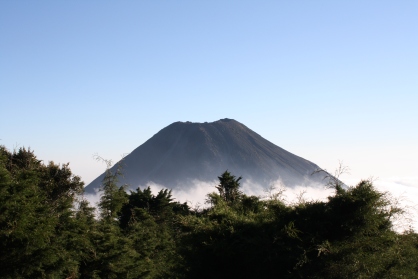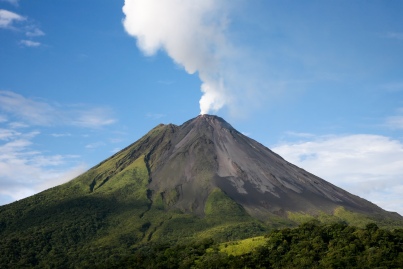A few weeks ago, I wrote a blog about knowledge and tragedy. This post detailed issues of bounded awareness and trust issues during times of disaster. Mary also discussed trust during emergencies. We often think of the failure of individuals or systems during a tragedy or a botched disaster response. These failures happen, of course, but are there other factors involved?
 Jones and Mahon (2012) detail the environment as a clear factor in knowledge management. These researchers describe high velocity, turbulent, and stable environments and how the inherent characteristics of these may hinder effective knowledge management practices. Jones and Mahon (2012) reiterate that decisions made in real time may have life or death consequences (e.g., military combat knowledge management). They describe the battlefield as a high-velocity situation, which is often short-lived; knowledge results from pattern-recognition across individual cases. Reflection on what happened occurs afterward when there is time to do so. Conversely, turbulent environments are long-lived with significant changes in communication among involved parties. Stable environments are low-pressure, with challenges occurring in communication and complacency when the environment shifts to turbulent or high-velocity. In a stable environment, complacency may cause something similar to bounded awareness. Regardless of success with standard operating procedures, we must recognize that conditions may change, and we must anticipate these changes (e.g., strategic planning, communication plans). Tacit and explicit knowledge are both critical in these environments, especially in high-velocity situations. In the face of tough circumstances, how do we transfer critical tacit knowledge quickly and effectively?
Jones and Mahon (2012) detail the environment as a clear factor in knowledge management. These researchers describe high velocity, turbulent, and stable environments and how the inherent characteristics of these may hinder effective knowledge management practices. Jones and Mahon (2012) reiterate that decisions made in real time may have life or death consequences (e.g., military combat knowledge management). They describe the battlefield as a high-velocity situation, which is often short-lived; knowledge results from pattern-recognition across individual cases. Reflection on what happened occurs afterward when there is time to do so. Conversely, turbulent environments are long-lived with significant changes in communication among involved parties. Stable environments are low-pressure, with challenges occurring in communication and complacency when the environment shifts to turbulent or high-velocity. In a stable environment, complacency may cause something similar to bounded awareness. Regardless of success with standard operating procedures, we must recognize that conditions may change, and we must anticipate these changes (e.g., strategic planning, communication plans). Tacit and explicit knowledge are both critical in these environments, especially in high-velocity situations. In the face of tough circumstances, how do we transfer critical tacit knowledge quickly and effectively?
 In response to this question, Jones and Mahon (2012) created a model that includes the fundamental aspects of preparing for unstable environments. They highlight appropriate considerations for those preparing for such situations including (1) developing strategic communication plans, (2) considering organizational culture, (3) providing proper training to help people deal with ambiguity, (4) having access to appropriate technologies (e.g., social networks, databases), and (5) developing a central command area within the organizational structure that facilitates knowledge sharing and transfer. Together, these elements help organizations prepare for effective practice in the face of adversity, as Raphael recently discussed.
In response to this question, Jones and Mahon (2012) created a model that includes the fundamental aspects of preparing for unstable environments. They highlight appropriate considerations for those preparing for such situations including (1) developing strategic communication plans, (2) considering organizational culture, (3) providing proper training to help people deal with ambiguity, (4) having access to appropriate technologies (e.g., social networks, databases), and (5) developing a central command area within the organizational structure that facilitates knowledge sharing and transfer. Together, these elements help organizations prepare for effective practice in the face of adversity, as Raphael recently discussed.
An interesting aspect of this model is the access to technologies. What happens when an organization doesn’t have access to the information needed? What if the organization doesn’t have the tools and resources necessary to create the information needed for an effective response to changing environments?
Lam and Chua (2009) discuss knowledge outsourcing as a response to these issues. Knowledge outsourcing is when organizations contract external entities for their expertise. They identify favorable conditions for knowledge outsourcing (e.g., lack of in-house experts) but also examine the risks. First, organizations must be able to identify their knowledge needs. Second, knowledge sourcing must occur. This process is challenging in that it requires finding qualified outlets to produce knowledge that have the time and resources to get the job done. The an organization must negotiate knowledge services, ensure timely and adequate knowledge delivery, and monitor the contracted services over time. Moreover, utilizing knowledge may bring challenges due to the appropriateness of the knowledge. This is especially important in high-velocity and/or turbulent environments. What good is knowledge if it cannot be used in changing environments?
 To illustrate these potential issues, think about an organization contracting an outside entity to construct a crisis response plan to anticipate a potential change in environment (i.e., stable to turbulent). This is a common practice, yet I think the focus is on explicit knowledge rather than tacit. Because of this, organizational members should be contributing to planning – engaging in a form of knowledge insourcing (Lam & Chua, 2009). I think this practice will also contribute to other dimensions of Jones and Mahon’s (2012) model such as developing strategic communication plans and considering organizational culture. In sum, for optimal knowledge management, organizations must consider individuals, systems, and environments.
To illustrate these potential issues, think about an organization contracting an outside entity to construct a crisis response plan to anticipate a potential change in environment (i.e., stable to turbulent). This is a common practice, yet I think the focus is on explicit knowledge rather than tacit. Because of this, organizational members should be contributing to planning – engaging in a form of knowledge insourcing (Lam & Chua, 2009). I think this practice will also contribute to other dimensions of Jones and Mahon’s (2012) model such as developing strategic communication plans and considering organizational culture. In sum, for optimal knowledge management, organizations must consider individuals, systems, and environments.
References
Jones, N. B. & Mahon, J. F. (2012) Nimble knowledge transfer in high velocity/turbulent environments. Journal of Knowledge Management, 16(5), 774-788. doi:10.1108/13673271211262808
Lam, W., & Chua, A. Y. (2009). Knowledge outsourcing: An alternative strategy for knowledge management. Journal of Knowledge Management, 13(3), 28-43. doi:10.1108/13673270910962851